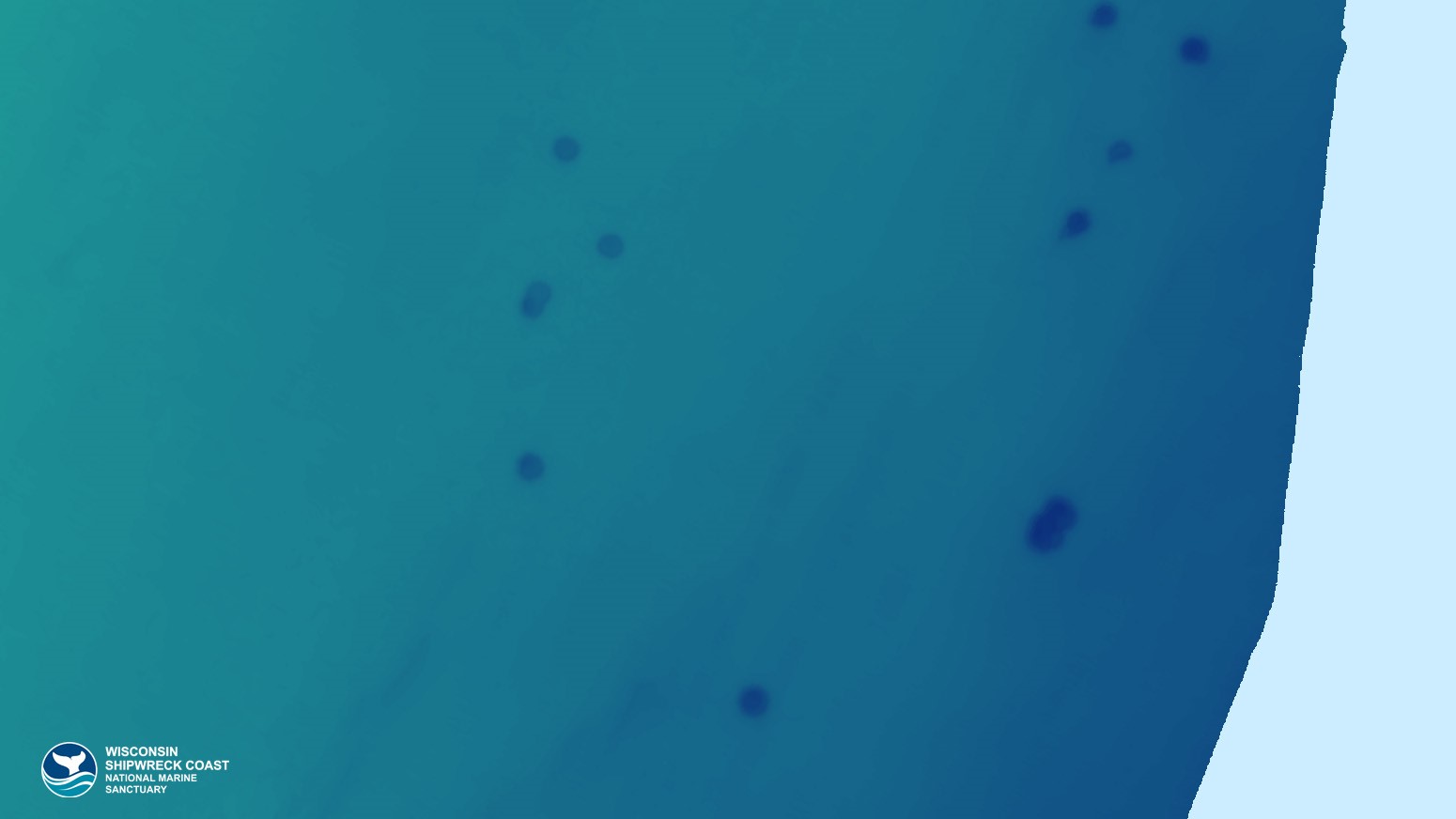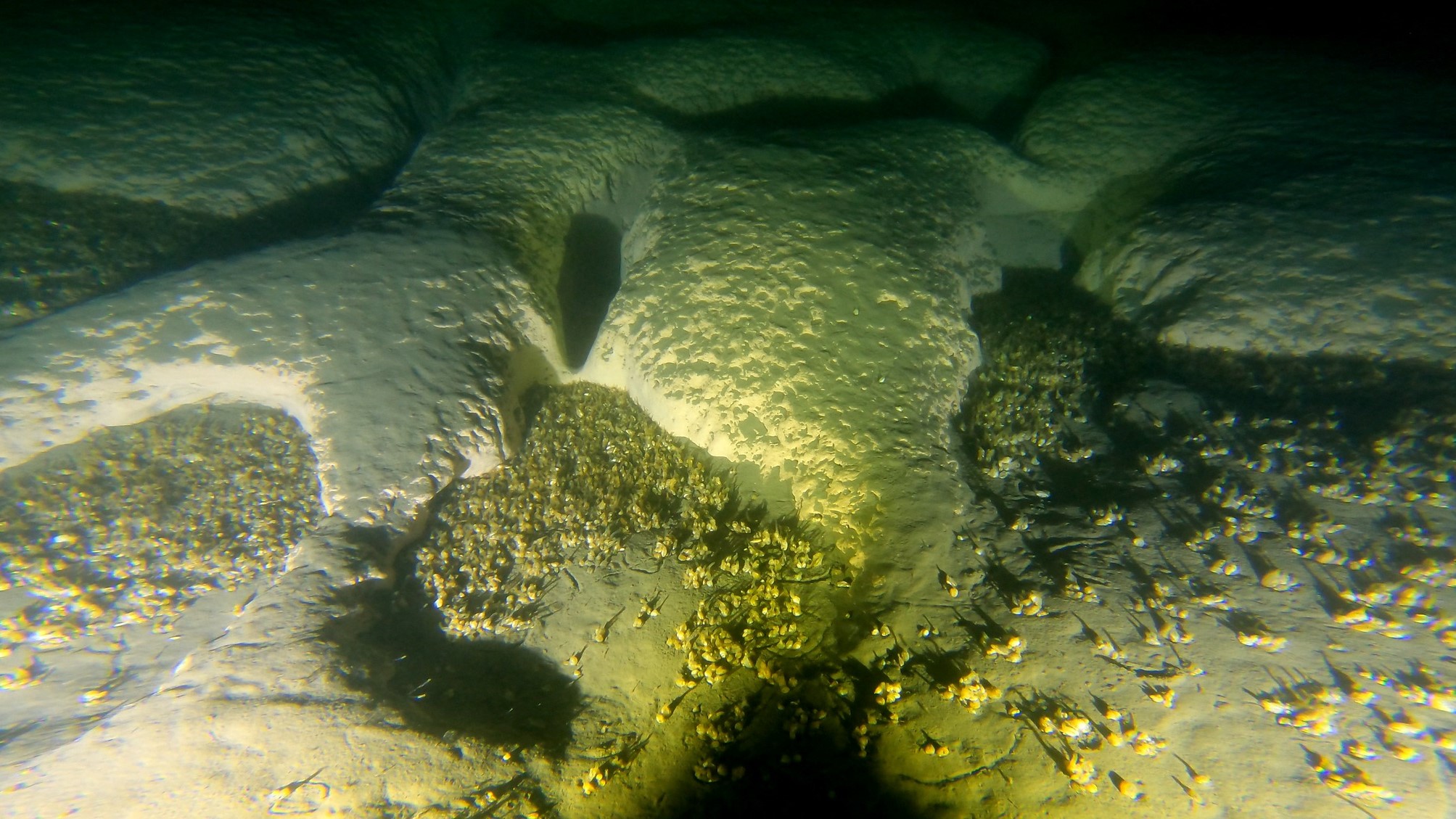
Two years ago, sonar images revealed strange circles at the bottom of Lake Michigan that scientists couldn't explain. Now, a survey has determined the shapes are giant holes — but there are many more secrets left to unravel, researchers say.
The holes were first discovered in 2022, when researchers embarked on a mission to map the lakebed inside the Wisconsin Shipwreck Coast National Marine Sanctuary, a protected area of Lake Michigan that contains 36 known shipwrecks, and may contain many more. Weird circles appeared on the map that looked natural rather than human-made, Russ Green, a maritime archaeologist and superintendent of the sanctuary who took part in the mapping project, told Live Science in an email. The shapes were likely depressions in the lakebed, but the researchers couldn't be sure.
"Any kind of new discovery in the Great Lakes is exciting," Green said. "But these features really stand out — they are in deeper water (500 feet [150 meters] ish) and weren't known before, as far as we can tell."
Brendon Baillod, a local shipwreck hunter, spotted the mysterious circles around the same time as Green and his colleagues while searching for a sunken freighter. To his eyes, the circles were clearly depressions, or craters, measuring between 20 and 40 feet (6 to 12 m) deep, Baillod told Live Science in an email. "There were dozens of them in our search grid," he said. "Most were 500 to 1,000 feet [150 to 300 m] in diameter and of irregular shapes."
Related: Deepest blue hole in the world discovered, with hidden caves and tunnels believed to be inside
There was a lag in processing data from the initial mapping expedition, but Green, Baillod and their colleagues eventually contacted scientists at the National Oceanic and Atmospheric Administration's (NOAA) Great Lakes Environmental Research Laboratory (GLERL), Green said.
This year, the research teams conducted a joint survey to examine the circles more closely. On Aug. 21, they used a remotely operated vehicle to confirm that the shapes are enormous, naturally-occurring craters. Scientists counted roughly 40 of them, but there are likely more to be found, Steve Ruberg, a researcher at GLERL, told the Milwaukee Journal Sentinel.

The craters were like "perfect, little circles" on the lakebed about 14 miles (23 kilometers) southeast of Sheboygan, Wisconsin, Ruberg said, and extended southwards in a line toward Port Washington, also in Wisconsin.
Researchers previously found similar depressions at the bottom of Lake Huron, which borders Michigan and Canada. Those depressions turned out to be sinkholes, which are caverns that form — both underwater and on land — when groundwater dissolves the bedrock from below, causing the surface layer to collapse. Lake Michigan partly sits on limestone, which is prone to dissolution, so it's likely that the craters on the lakebed are also sinkholes, Ruberg said.
Others are holding off on calling the circles sinkholes until more research has been done. "I think they might be more accurately called craters, which have formed in the deep bottom sediment due either to water upwelling from below or trapped hydrocarbon offgassing," Baillod said.
The recent survey found no water escaping from the holes that would suggest there is groundwater circulating beneath the lakebed, but Ruberg said he expects researchers will eventually detect some. Images and videos of the holes showed freshwater shrimp, small fish and invasive quagga mussels "doing their thing in the dark down there," he said.
It's unclear what impact the holes might be having on Lake Michigan as a whole, but researchers are confident they will find out in time. "We'll be exploring them for years to come to learn more, and sort out how they got there and what role they play in Lake Michigan's ecosystem," Green said.







